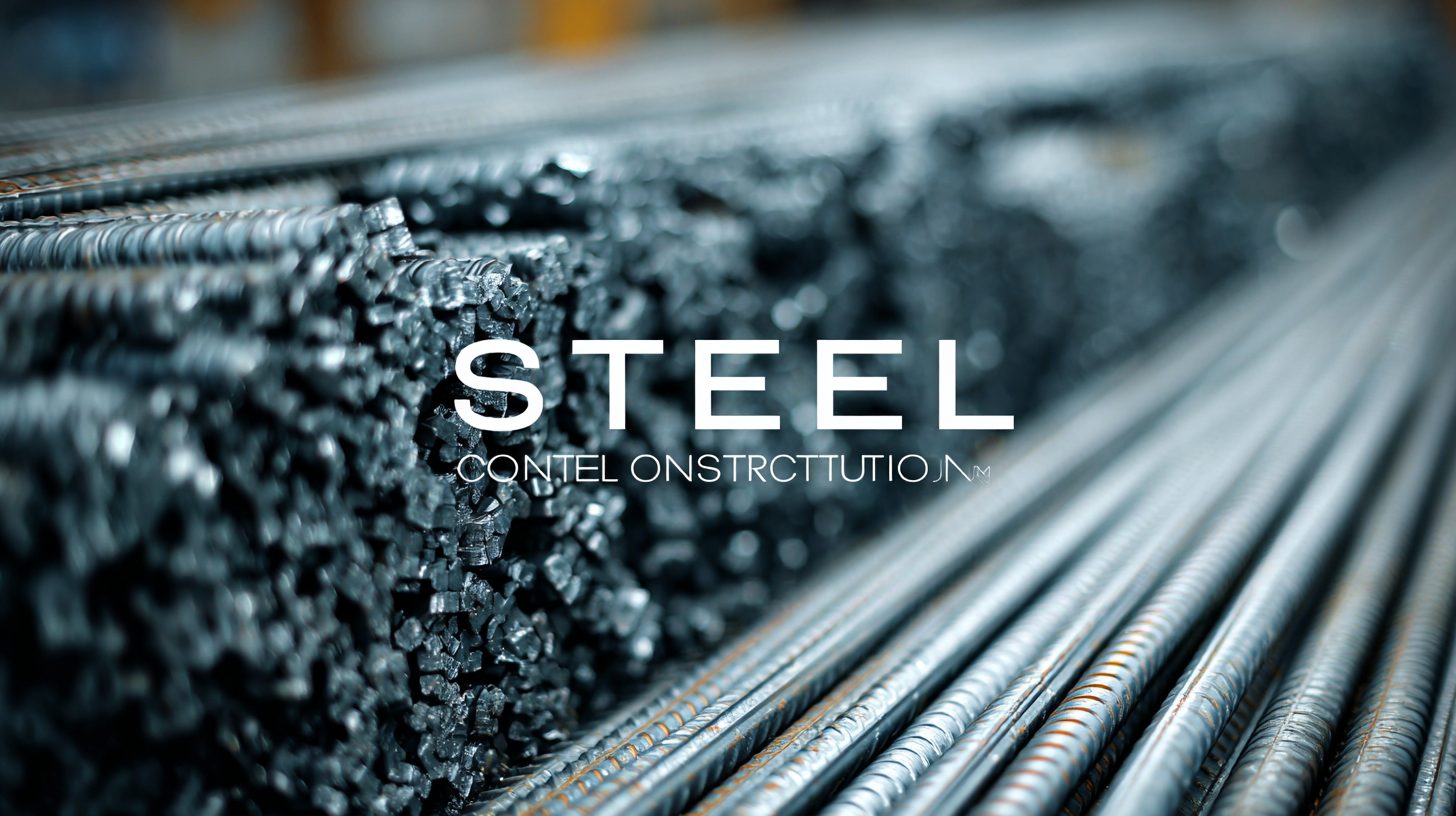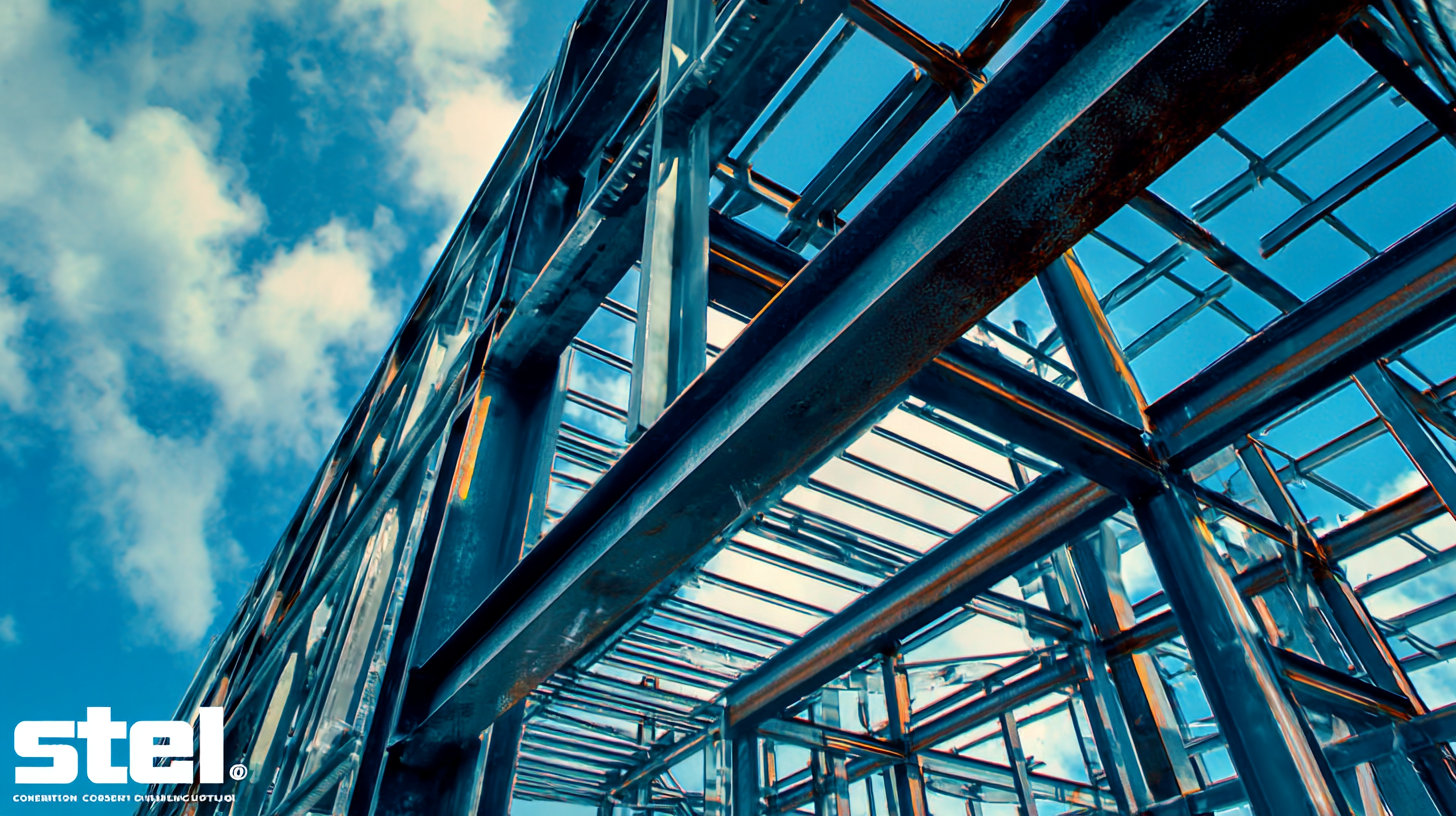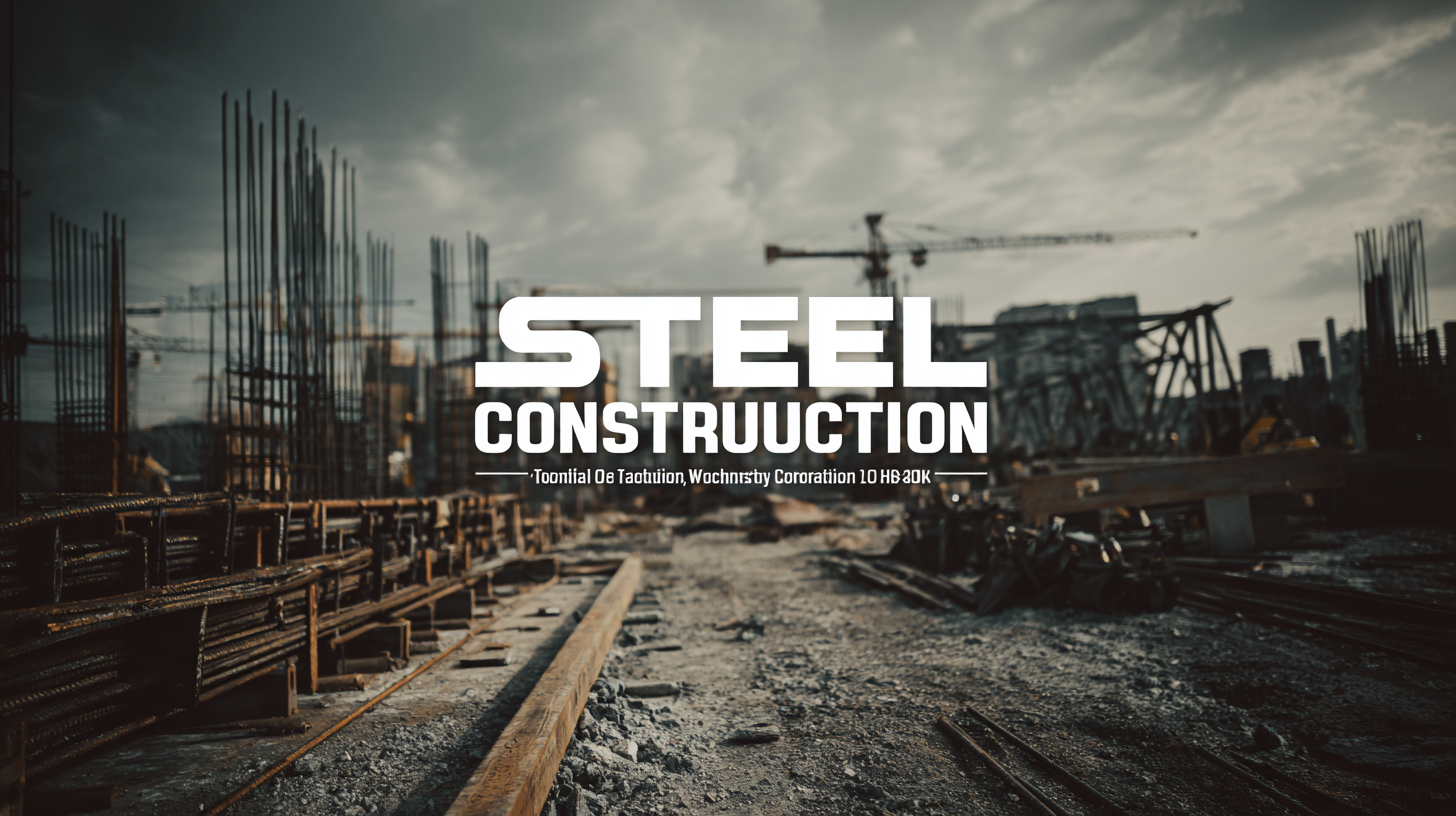
As we look toward 2025, the global steel construction industry is poised for remarkable innovations that promise to redefine the sector. According to a report by the World Steel Association, the demand for steel is projected to reach over 1.7 billion tons annually by 2025, driven by urbanization and infrastructure development. This surge in demand presents a unique opportunity for advancements in construction technologies, including the adoption of sustainable practices and smart manufacturing processes. Innovations such as modular construction, robotic fabrication, and high-strength steel alloys are on the forefront, enabling faster, safer, and more efficient building methods. As we explore the best steel construction innovations to watch in this ultimate guide, we aim to highlight the transformative trends that will shape the future of construction, enhancing not only operational efficiency but also environmental sustainability in the steel industry.

As we delve into the current landscape of steel construction innovations in 2025, it becomes evident that the industry is navigating through a transformative phase marked by significant challenges. Recent reports highlight a decline in production and consumption levels, rooted in economic factors such as slower domestic growth, a languishing real estate market, and decreased manufacturing investment. These elements have collaboratively led to a reevaluation of strategies within the steel sector, pushing companies to innovate in order to maintain competitiveness.
In response to these hurdles, the steel construction industry is increasingly embracing technological advancements. Innovations such as the integration of smart materials, automation in manufacturing processes, and improved recycling methods are becoming the focal points of development. Furthermore, there is a growing emphasis on sustainability, with companies investing in greener practices to meet regulatory demands and market expectations. This shift not only aims to enhance operational efficiency but also to align the industry with global sustainability goals, ensuring a more resilient future for steel construction.
This bar chart illustrates the projected adoption rates of various steel construction innovations in 2025. The data highlights the anticipated growth in technology integration, sustainability practices, and advanced construction methodologies within the steel industry.
The modern construction industry is rapidly evolving, and high-performance steel products are at the forefront of this transformation. Key characteristics of these products include their exceptional strength-to-weight ratios, enhanced durability, and resistance to extreme environments. As we move towards 2025, innovative developments in steel construction will focus on integrating advanced materials that meet the growing demands for sustainability and efficiency.
The high-temperature alloy market has shown significant growth, with a global market size reaching approximately $12.16 billion in 2018, marking a yearly increase of about 26.98%. This upward trend indicates the increasing reliance on high-performance materials across various applications, from aerospace to energy sectors. As industries strive for better performance and longevity in their structures, integrating high-performance steel into construction will become indispensable.
**Tip:** For architects and engineers, staying updated on the latest advancements in steel technologies can greatly enhance project outcomes. Investing in high-performance steel not only increases structural integrity but also optimizes lifecycle costs.
**Tip:** Collaborating with material scientists can lead to innovative design solutions that leverage the unique properties of high-performance steel, ensuring your projects are both cutting-edge and compliant with future standards.
| Innovative Steel Product | Key Characteristics | Applications | Sustainability Features |
|---|---|---|---|
| High-Strength Steel | Enhanced tensile strength, lightweight | Bridges, high-rise buildings | Reduced material consumption |
| Corrosion-Resistant Steel | Improved durability, reduced maintenance | Marine structures, pipelines | Longer lifespan, less waste |
| Reinforced Steel | Higher load-bearing capacity | Foundations, large-scale construction | Minimizes resource extraction |
| Smart Steel Alloys | Adaptive properties, high performance | Advanced engineering, automotive | Energy efficiency, lifecycle analysis |
| Eco-Friendly Steel | Recycled materials, low carbon footprint | Residential and commercial buildings | Supports circular economy |
The construction industry is at a pivotal transformation point, where sustainable steel solutions are reshaping how structures are conceived and constructed. As the world leans into eco-consciousness, innovations in steel production are maximizing efficiency while significantly reducing environmental impact. Recycled steel, for instance, is becoming increasingly prevalent, allowing builders to utilize up to 90% of reused materials in new projects. This not only decreases the carbon footprint but also lowers costs, creating a win-win scenario for both developers and the environment.
Moreover, advanced fabrication techniques are enhancing construction efficiency, minimizing waste and labor costs. Innovations such as modular construction and 3D printing are gaining traction, enabling faster assembly times and greater precision. These methods allow steel structures to be fabricated off-site and then transported for quick installation, streamlining the building process and reducing delays associated with traditional construction approaches. As we approach 2025, the integration of these sustainable practices and technologies is expected to redefine industry standards, promoting a future where steel construction is not only strong and durable but also a beacon of environmental responsibility.

Emerging technologies in steel fabrication are poised to reshape the industry landscape by 2025, driven by advancements in automation, digitalization, and sustainable practices. According to a report by ResearchAndMarkets, the global steel fabrication market is expected to reach $237.2 billion by 2026, growing at a CAGR of 5.2%. This growth is fueled by innovations such as robotics in welding and cutting, which enhance precision and efficiency while minimizing waste.
The adoption of robotic arms and automated systems not only accelerates the production processes but also mitigates safety risks for workers, aligning with increasing workplace safety standards.
Moreover, the rise of Building Information Modeling (BIM) technology has transformed the way steel structures are designed and realized. A study by MarketsandMarkets suggests that the BIM market in construction could grow from $5.21 billion in 2020 to $19.38 billion by 2026, reflecting a CAGR of 24.5%. This digital approach allows for better visualization, coordination, and project management, leading to significant cost savings and improved timelines in steel construction projects. As industry players embrace these technological advancements, the potential for enhanced performance and sustainability in steel fabrication will undoubtedly continue to expand, making it a sector to watch closely in the years to come.
In the exploration of steel types for construction, it’s crucial to recognize the significant environmental impact of these materials. Recent studies indicate that approximately 20% of global building emissions stem from steel and cement production. This emphasizes the need for a systematic approach to select materials that not only meet structural requirements but also contribute to sustainability. A life cycle assessment (LCA) framework emerges as an invaluable tool, helping industry professionals to analyze the sustainability of various building materials throughout their entire lifecycle.

A comparative analysis of various steel types reveals that choices made early in the design process can significantly affect the overall carbon footprint of a project. For instance, advancements in the understanding of embodied carbon highlight that the environmental performance of structural materials can be drastically improved by selecting high-strength steel, which typically requires less material while maintaining structural integrity. Furthermore, innovative methods such as off-site prefabrication are gaining traction, showcasing a potential reduction in greenhouse gas emissions compared to conventional construction techniques. By integrating such innovative materials and practices, the construction sector can take substantial steps towards mitigating its environmental impact while still achieving structural excellence.